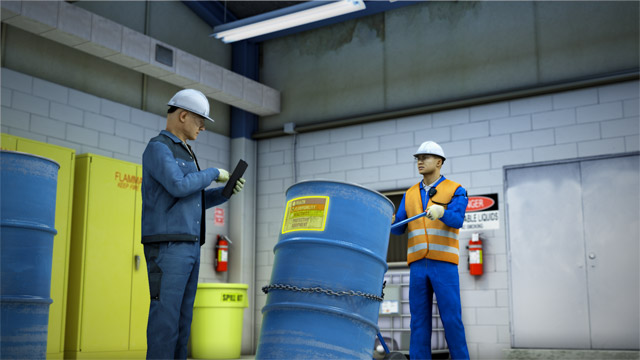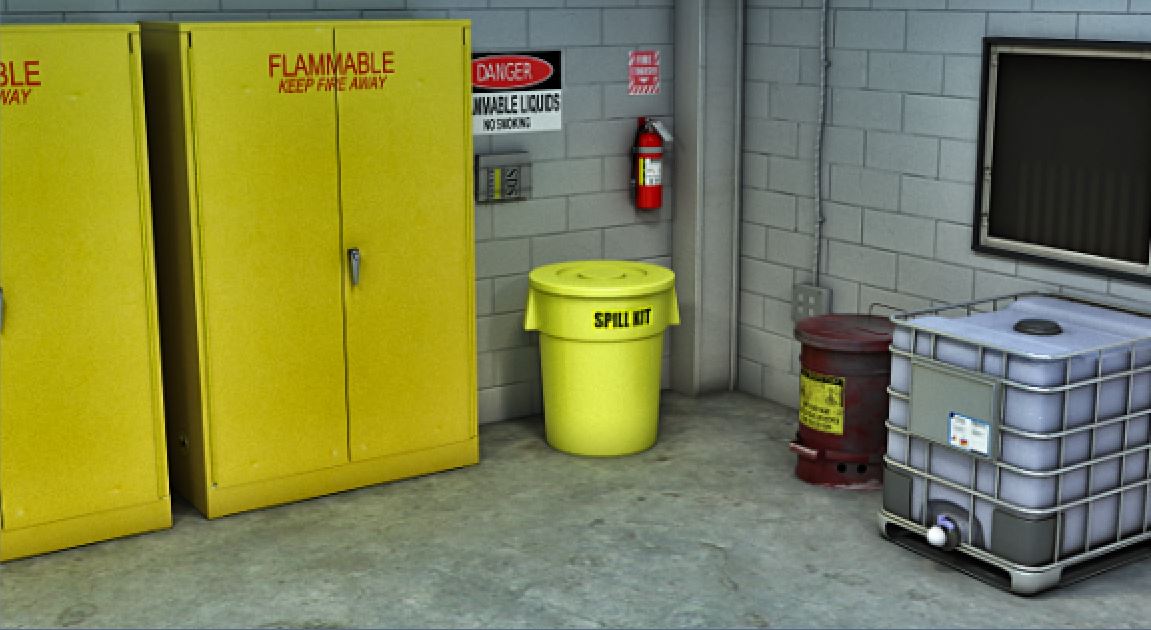




Storage and Handling of Category 3 and 4 Flammables
Category 3 and 4 flammables, previously identified as “combustibles,” have higher flash points than category 1 and 2 flammables, which means that they require higher temperatures to produce vapors that will ignite and burn if an ignition source is present. To safely store and handle combustible liquids, make sure you read and understand their labels and safety data sheets, and fully understand their hazards. Also follow the combustible liquid storage and handling best practices in this course and for your workplace.
Request a demoCourse Details
Learning Objectives
• Define the terms “flash point” and “boiling point” • Differentiate between “combustibles” and “flammables” • Describe how flammables and combustibles are categorized • Describe the workplace requirements for hazardous chemicals in OSHA’s HazCom Standard • Describe how flammability is indicated on chemical labels • Identify the characteristics of combustibles which make them especially hazardous • List storage and handling best practices for combustibles
Specs
| Course Level | Intermediate |
| Languages | English |
| Compatibility | Audio, Video |
| Based on: | 29 CFR 1910 (2016): Hazard Communication Standard |
Key Questions
What is the difference between flash point and boiling point?
Flash point is the lowest temperature at which a liquid gives off enough vapor to ignite with an ignition source, while boiling point is the temperature at which a liquid will vaporize.
What is the HazCom (Hazard Communication) standard?
In the U.S., OSHA’s HazCom Standard requires information on the identities and hazards of workplace chemicals to be available and understandable to workers.
Do storage rooms used to store combustible liquids have any special requirements?
They must meet NFPA specifications. This includes being equipped with liquid-tight raised door sills or open-grated trenches, fire doors, liquid-tight floor-to-wall joints, and window protection, among other things. They must also meet the fire resistive rating for their use.
Why is it important to keep combustible liquid containers closed when not in use?
Their vapors can be heavier than air, so they can flow out and settle in low areas. If the vapor contacts an ignition source, the resulting fire can flash back along a “vapor trail” to the liquid source.
Does the HazCom Standard specify what chemical labels should look like?
No, but it specifies the information that must be included. ANSI, NFPA, HMIS, and DOT labels are used in different settings and all fulfill the HazCom Standard.
Sample Video Transcript
• Make sure all storage areas comply with all applicable rules and requirements, including building, fire, and electrical codes, for the site or location • Store spill cleanup supplies nearby, and clean up liquid spills and drips immediately • If a container is leaking, damaged, or shows signs of deterioration, remove it to a storage room or safe outside location and transfer the contents to an undamaged container. If dispensing from a metal container, make sure it is bonded and grounded. • When using flammables away from a storage area, adhere to OSHA quantity and usage guidelines • Make sure that all chemicals are disposed of properly, adhering to all current applicable rules and regulations
Additional Resources
- Occupational Safety and Health Administration (OSHA) – www.osha.gov
- OSHA Standards – https://www.osha.gov/pls/oshaweb/owadisp.show_document?p_table=standards&p_id=10099
- OSHA Publications – https://www.osha.gov/Publications/OSHA2236/osha2236.html
Course Applies To
Demos + Pricing
Learn more about our courses, get pricing, and see our platform.











